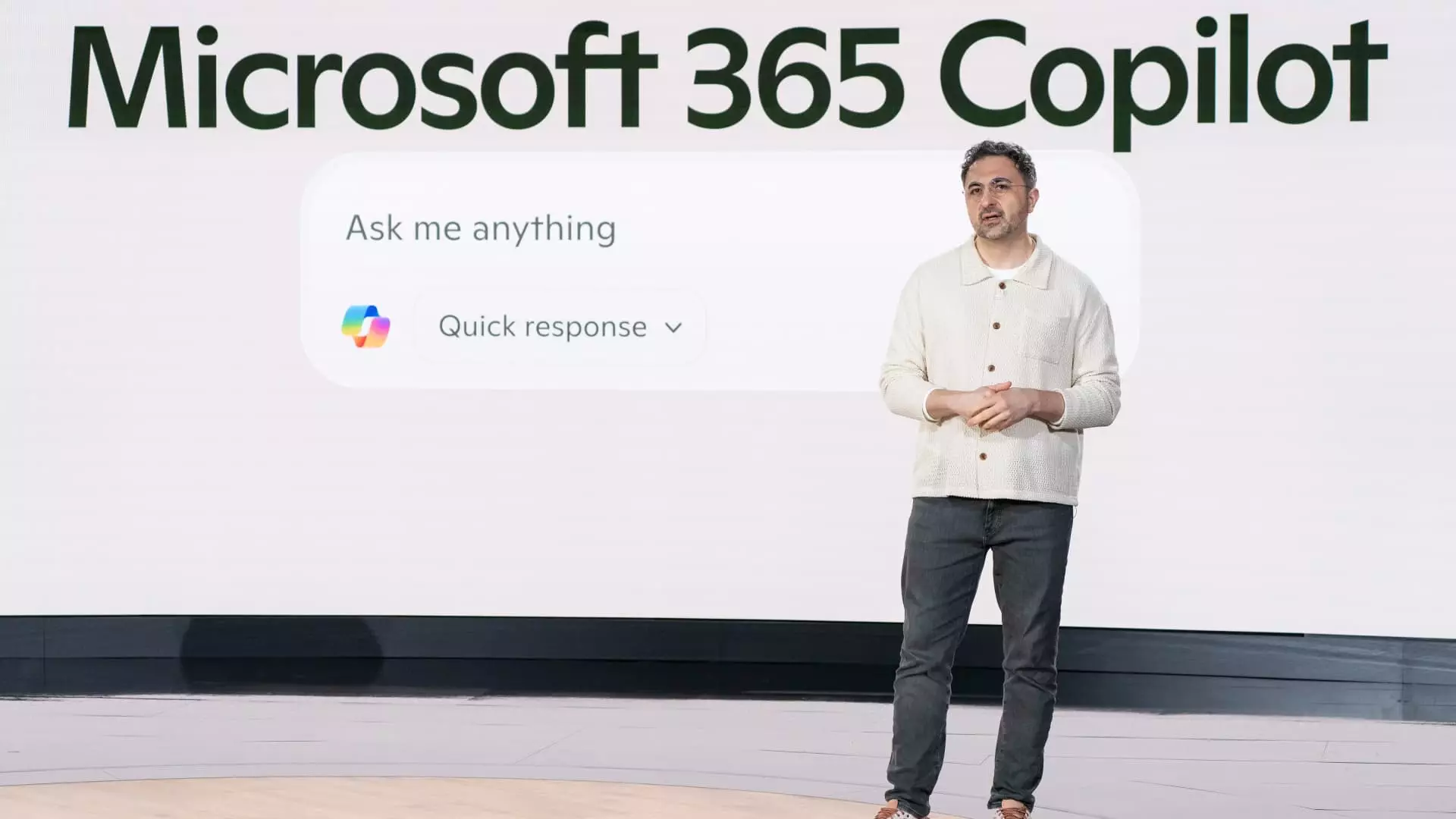In an era defined by the relentless pursuit of cutting-edge technology, the recent insights shared by Mustafa Suleyman, Microsoft’s CEO of AI, present a refreshing perspective on how innovation can be strategically approached. While many tech giants race to be the first to develop state-of-the-art artificial intelligence models, Microsoft appears to be opting for a strategic delay—a decision that might seem counterintuitive at first glance but carries logical and financial weight. By refraining from diving headfirst into the creation of the latest AI advancements, the company is instead focusing on developing solutions that are specifically tailored to distinct applications while benefiting from the lessons learned by others.
Suleyman’s notion of waiting for three to six months to evaluate the landscape before making significant technological leaps reflects a shrewd investment strategy. The benefits are manifold: lower development costs, enhanced understanding of user needs, and the opportunity to build on pre-existing models. This “off-frontier” approach allows Microsoft not just to keep pace but to concentrate resources effectively, ensuring that their AI developments are not only timely but aligned with the practical demands of the market.
Partnerships as a Pathway to Growth
Microsoft’s collaborative stance within the AI sector cannot be overstated. With pivotal partnerships, particularly with OpenAI, the company positions itself to augment its capabilities without overextending its resources. Suleyman’s experience as a co-founder of DeepMind underscores the importance of strategic alliances in accelerating innovation. The partnership with OpenAI has been instrumental in enriching Microsoft’s products, weaving sophisticated generative AI technologies into widely-used applications such as Bing and Microsoft Office.
Additionally, the relationship with CoreWeave highlights another layer of strategic planning. By leveraging the computing power of external resources, Microsoft enhances its own offerings while circumventing the potentially prohibitive costs associated with maintaining an expansive in-house infrastructure. As the landscape of AI continues to evolve, Microsoft’s ability to adapt and pivot through such partnerships will be crucial to maintaining a competitive edge.
Building on Innovation: Lessons from the Frontline
The introduction of new features in Microsoft’s AI products closely follows advancements made by OpenAI, showcasing a tactical readiness to innovate based on the successes of existing high-functioning models. Suleyman’s comments about Copilot’s development, particularly its new memory feature, reveal a deliberate effort to iterate and enhance, rather than simply replicate. The focus is on refining user interactions and making them more intuitive based on real-world applications, an approach that is both fertile for growth and responsive to user feedback.
This philosophy stands in stark contrast to the tendency of many tech companies to rush headlong into the future with little regard for the practicalities of user experience. By prioritizing functionality over novelty, Microsoft is poised to redefine how users engage with AI tools—a critical element that may ultimately distinguish them in a crowded marketplace.
Navigating Relationship Dynamics in Tech
However, the landscape is not without its challenges. Recent developments indicate that the partnership between Microsoft and OpenAI might face strife, with Microsoft’s acknowledgment of OpenAI as a competitor marking a shift in their dynamic. The impending collaborations of OpenAI with other cloud providers, such as Oracle, could signal a reconfiguration of the collaborative eco-system underpinning AI development.
Suleyman’s assertion that Microsoft is committed to becoming self-sufficient in AI development reflects an understanding of the pressing need for organizational growth and independence. As the tech world progresses, the balance between collaboration and competition becomes paramount. Microsoft’s strategy to develop its own AI technologies internally, while maintaining an active partnership with OpenAI, epitomizes this balancing act. The road ahead may require careful navigation to foster both innovation and collaboration without compromising organizational goals.
In the unfolding narrative of AI development, Microsoft’s measured, strategic approach posits an alternative model to the flashy race for forefront technologies. By emphasizing patience, collaboration, and practical enhancements to user experience, the company positions itself not just as a participant in the AI revolution, but as a thoughtful architect of its future, capable of transforming challenges into opportunities. As the industry evolves, Microsoft may just be the silent giant of AI, building foundations that could shape the technological landscape for years to come.

